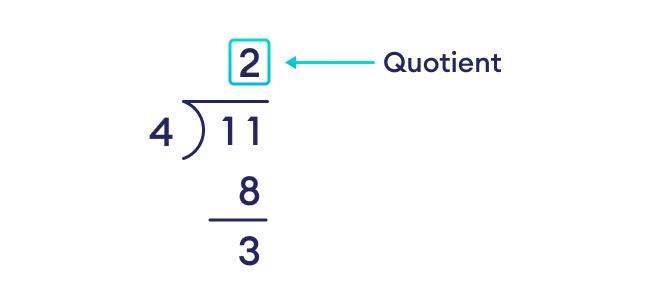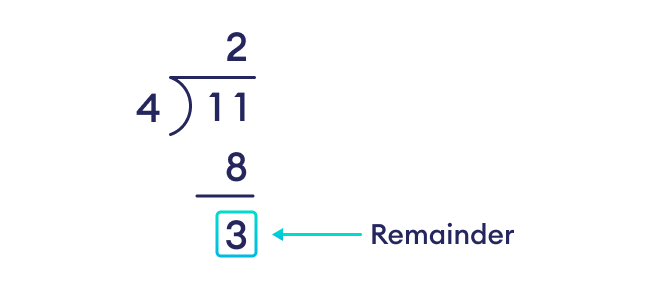In Computer Programming, an operator is a symbol that performs operations on a value or a variable.
For example, + is an operator that is used to add two numbers.
Go programming provides wide range of operators that are categorized into following major categories:
- Arithmetic operators
- Assignment operator
- Relational operators
- Logical operators
Arithmetic Operator
We use arithmetic operators to perform arithmetic operations like addition, subtraction, multiplication, and division.
Here's a list of various arithmetic operators available in Go.
| Operators | Example |
|---|---|
+ (Addition) |
a + b |
- (Subtraction) |
a - b |
* (Multiplication) |
a * b |
/ (Division) |
a / b |
% (Modulo Division) |
a % b |
Example 1: Addition, Subtraction and Multiplication Operators
package main
import "fmt"
func main() {
num1 := 6
num2 := 2
// + adds two variables
sum := num1 + num2
fmt.Printf("%d + %d = %d\n", num1, num2, sum)
// - subtract two variables
difference := num1 - num2
fmt.Printf("%d - %d = %d\n",num1, num2, difference)
// * multiply two variables
product := num1 * num2
fmt.Printf("%d * %d is %d\n",num1, num2, product)
}
Output
6 + 2 = 8 6 - 2 = 4 6 * 2 = 12
Example 2: Golang Division Operator
package main
import "fmt"
func main() {
num1 := 11
num2 := 4
// / divide two integer variables
quotient := num1 / num2
fmt.Printf(" %d / %d = %d\n", num1, num2, quotient)
}
Output
11 / 4 = 2
In the above example, we have used the / operator to divide two numbers: 11 and 4. Here, we get the output 2.
However, in normal calculation, 11 / 4 gives 2.75. This is because when we use the / operator with integer values, we get the quotients instead of the actual result.

If we want the actual result we should always use the / operator with floating point numbers. For example,
package main
import "fmt"
func main() {
num1 := 11.0
num2 := 4.0
// / divide two floating point variables
result := num1 / num2
fmt.Printf(" %g / %g = %g\n", num1, num2, result)
}
Output
11 / 4 = 2.75
Here, we get the actual result after division.
Example 3: Modulus Operator in Go
package main
import "fmt"
func main() {
num1 := 11
num2 := 4
// % modulo-divides two variables
remainder := num1 % num2
fmt.Println(remainder )
}
In the above example, we have used the modulo operator with numbers: 11 and 4. Here, we get the result 3.
This is because in programming, the modulo operator always returns the remainder after division.

Note: The modulo operator is always used with integer values.
Increment and Decrement Operator in Go
In Golang, we use ++ (increment) and -- (decrement) operators to increase and decrease the value of a variable by 1 respectively. For example,
package main
import "fmt"
func main() {
num := 5
// increment of num by 1
num++
fmt.Println(num) // 6
// decrement of num by 1
num--
fmt.Println(num) // 4
}
In the above example,
- num++ - increases the value of num by
1, from5to6 - num-- - decreases the value of num by
1, from5to4
Note: We have used ++ and -- as prefixes (before variable). However, we can also use them as postfixes (num++ and num--).
There is a slight difference between using increment and decrement operators as prefixes and postfixes. To learn the difference, visit Increment and Decrement Operator as Prefix and Postfix.
Go Assignment Operators
We use the assignment operator to assign values to a variable. For example,
var number = 34
Here, the = operator assigns the value on right (34) to the variable on left (number).
Example: Assignment Operator in Go
package main
import "fmt"
func main() {
num := 6
var result int
// = operator to assign the value of num to result
result = num
fmt.Println(result) // 6
}
In the above example, we have used the assignment operator to assign the value of the num variable to the result variable.
Compound Assignment Operators
In Go, we can also use an assignment operator together with an arithmetic operator. For example,
number := 2
number += 6
Here, += is additional assignment operator. It first adds 6 to the value of number (2) and assigns the final result (8) to number.
Here's a list of various compound assignment operators available in Golang.
| Operator | Example | Same as |
|---|---|---|
+= (addition assignment) |
a += b |
a = a + b |
-= (subtraction assignment) |
a -= b |
a = a - b |
*= (multiplication assignment) |
a *= b |
a = a * b |
/= (division assignment) |
a /= b |
a = a / b |
%= (modulo assignment) |
a %= b |
a = a % b |
Relational Operators in Golang
We use the relational operators to compare two values or variables. For example,
5 == 6
Here, == is a relational operator that checks if 5 is equal to 6.
A relational operator returns
trueif the comparison between two values is correctfalseif the comparison is wrong
Here's a list of various relational operators available in Go:
| Operator | Example | Descriptions |
|---|---|---|
== (equal to) |
a == b |
returns true if a and b are equal |
!= (not equal to) |
a != b |
returns true if a and b are not equal |
> (greater than) |
a > b |
returns true if a is greater than b |
< (less than) |
a < b |
returns true if a is less than b |
>= (greater than or equal to) |
a >= b |
returns true if a is either greater than or equal to b |
<= (less than or equal to) |
a <= b |
returns true is a is either less than or equal to b |
To learn more, visit Go relational operators.
Logical Operators in Go
We use the logical operators to perform logical operations. A logical operator returns either true or false depending upon the conditions.
| Operator | Description | Example |
|---|---|---|
&& (Logical AND) |
exp1 && exp2 |
returns true if both expressions exp1 and exp2 are true |
|| (Logical OR) |
exp1 || exp2 |
returns true if any one of the expressions is true. |
! (Logical NOT) |
!exp |
returns true if exp is false and returns false if exp is true. |
To learn more, visit Go logical operators.
More on Go Operators
The right shift operator shifts all bits towards the right by a certain number of specified bits.
Suppose we want to right shift a number 212 by some bits then,
212 = 11010100 (In binary)
212 >> 3 = 00011010 = 26 (Right shift by 3 bits)
212 >> 7 = 00000001 = 1 (Right shift by 7 bits)
212 >> 0 = 11010100 = 212 (No Shift)
For example,
package main
import "fmt"
func main() {
num := 212
for i := 0; i <= 3; i++ {
// right shift 212 by bits from 0 to 3
fmt.Printf("Right Shift by %d: %d\n", i, num>>i)
}
}
Output
Right Shift by 0: 212 Right Shift by 1: 106 Right Shift by 2: 53 Right Shift by 3: 26
The left shift operator shifts all bits towards the left by a certain number of specified bits. The bit positions that have been vacated by the left shift operator are filled with 0.
Suppose we want to left shift a number 212 by some bits then,
212 = 11010100 (In binary)
212 << 1 = 110101000 = 424 (Adds one 0 to the right)
212 << 3 = 11010100000 = 1696 (Adds three 0's to the right)
212 << 0 = 11010100 = 212 (No Shift)
For example,
package main
import "fmt"
func main() {
num := 212
for i := 0; i <= 3; i++ {
// left shift 212 by bits from 0 to 3
fmt.Printf("Left Shift by %d: %d\n", i, num<<i)
}
}
Output
Left Shift by 0: 212 Left Shift by 1: 424 Left Shift by 2: 848 Left Shift by 3: 1696
In Go, & is the address operator that is used for pointers. It holds the memory address of a variable. For example,
package main
import "fmt"
func main() {
num := 20
// &num prints the
// memory address where 20 is stored
fmt.Println(&num)
}
// Output: 0xc0000b8000
Here, we have used the * operator to declare the pointer variable. To learn more, visit Go Pointers.
* operator in Go?
In Go, * is the dereferencing operator used to declare a pointer variable. A pointer variable stores the memory address. For example,
package main
import "fmt"
func main() {
b := 20
// pointer declaration
var num *int = &b
// gives the memory address
fmt.Println(num)
}
// Output: 0xc00010a000
Here, we have used the * operator to declare the pointer variable. To learn more, visit Go Pointers.
In Go, we use the concept called operator precedence which determines which operator is executed first if multiple operators are used together. For example,
result := 32 / 8 + 2 * 9 -4
Here, the / operator is executed first followed by the * operator. The + and - operators are respectively executed at last.
This is because operators with the higher precedence are executed first and operators with lower precedence are executed last.